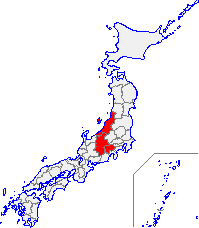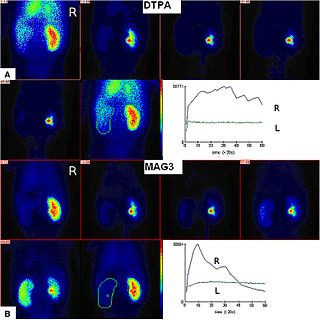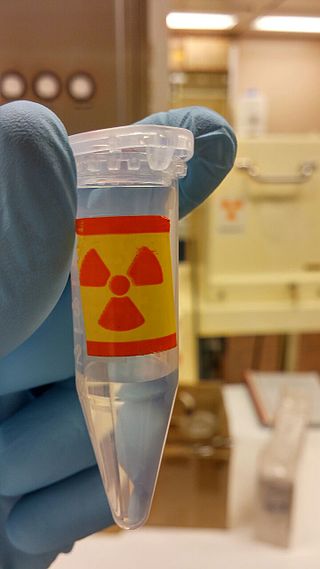Since its birth as a discipline in the twentieth century, the definition of nuclear engineering has evolved from its initial focus of "getting power from nuclear fission" to the broader concept of "nuclear engineering as any application of nuclear and atomic interactions:
Medical physics deals with the application of the concepts and methods of physics to the prevention, diagnosis and treatment of human diseases with a specific goal of improving human health and well-being. Since 2008, medical physics has been included as a health profession according to International Standard Classification of Occupation of the International Labour Organization.

Nuclear medicine or nucleology is a medical specialty involving the application of radioactive substances in the diagnosis and treatment of disease. Nuclear imaging, in a sense, is "radiology done inside out" because it records radiation emitting from within the body rather than radiation that is generated by external sources like X-rays. In addition, nuclear medicine scans differ from radiology, as the emphasis is not on imaging anatomy, but on the function. For such reason, it is called a physiological imaging modality. Single photon emission computed tomography (SPECT) and positron emission tomography (PET) scans are the two most common imaging modalities in nuclear medicine.

Kōshin'etsu (甲信越) is a subregion of the Chūbu region in Japan consisting of Yamanashi, Nagano, and Niigata prefectures.

Radioisotope renography is a form of medical imaging of the kidneys that uses radiolabelling. A renogram, which may also be known as a MAG3 scan, allows a nuclear medicine physician or a radiologist to visualize the kidneys and learn more about how they are functioning. MAG3 is an acronym for mercapto acetyl tri glycine, a compound that is chelated with a radioactive element – technetium-99m.

The Department of Atomic Energy (DAE) is a department with headquarters in Mumbai, Maharashtra, India. DAE was established in 1954 by a Presidential Order. DAE has been engaged in the development of nuclear power technology, applications of radiation technologies in the fields of agriculture, medicine, industry and basic research. DAE comprises five research centres, three industrial organisations, five public sector undertakings and three service organisations. It has under its aegis two boards for promoting and funding extramural research in nuclear and allied fields, mathematics and a national institute. It also supports eight institutes of international repute engaged in research in basic sciences, astronomy, astrophysics, cancer research and education. It also has in its fold an educational society that provides educational facilities for children of DAE employees. The important programmes of the DAE are directed towards:

The Jordan University of Science and Technology, often abbreviated JUST, is a state-supported university located on the outskirts of Irbid, at Ar Ramtha in northern Jordan. The University comprises twelve faculties that offer a spectrum of undergraduate and higher study programs, in addition to King Abdullah University Hospital which is a tertiary teaching hospital affiliated with JUST and located within its campus.

Nuclear pharmacy, also known as radiopharmacy, involves preparation of radioactive materials for patient administration that will be used to diagnose and treat specific diseases in nuclear medicine. It generally involves the practice of combining a radionuclide tracer with a pharmaceutical component that determines the biological localization in the patient. Radiopharmaceuticals are generally not designed to have a therapeutic effect themselves, but there is a risk to staff from radiation exposure and to patients from possible contamination in production. Due to these intersecting risks, nuclear pharmacy is a heavily regulated field. The majority of diagnostic nuclear medicine investigations are performed using technetium-99m.
Technetium 99mTc albumin aggregated (99mTc-MAA) is an injectable radiopharmaceutical used in nuclear medicine. It consists of a sterile aqueous suspension of Technetium-99m (99mTc) labeled to human albumin aggregate particles. It is commonly used for lung perfusion scanning. It is also less commonly used to visualise a peritoneovenous shunt and for isotope venography.

The Society of Nuclear Medicine and Molecular Imaging (SNMMI), formerly the Society of Nuclear Medicine, is a nonprofit scientific and professional organization that promotes the science, technology and practical application of nuclear medicine and molecular imaging. SNMMI's mission is to improve human health by advancing molecular imaging and therapy.

Jim Green is an anti-nuclear campaigner with Friends of the Earth Australia. Green is a regular media commentator on nuclear issues. He has an honours degree in public health from the University of Wollongong and was awarded a PhD in science and technology studies for his analysis of the Lucas Heights research reactor debates.

Scintimammography is a type of breast imaging test that is used to detect cancer cells in the breasts of some women who have had abnormal mammograms, or for those who have dense breast tissue, post-operative scar tissue or breast implants.

Positron emission tomography–magnetic resonance imaging (PET–MRI) is a hybrid imaging technology that incorporates magnetic resonance imaging (MRI) soft tissue morphological imaging and positron emission tomography (PET) functional imaging.
The following outline is provided as an overview of and topical guide to applied science:
Sandip Basu is an Indian physician of Nuclear Medicine and the Head, Nuclear Medicine Academic Program at the Radiation Medicine Centre. He is also the Dean-Academic (Health-Sciences), BARC at Homi Bhabha National Institute and is known for his services and research in Nuclear Medicine, particularly on Positron emission tomography diagnostics and Targeted Radionuclide Therapy in Cancer. The Council of Scientific and Industrial Research, the apex agency of the Government of India for scientific research, awarded him the Shanti Swarup Bhatnagar Prize for Science and Technology, one of the highest Indian science awards for his contributions to Nuclear Medicine in 2012.
This page is based on this
Wikipedia article Text is available under the
CC BY-SA 4.0 license; additional terms may apply.
Images, videos and audio are available under their respective licenses.










